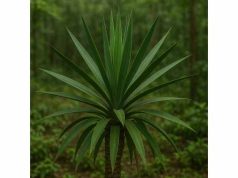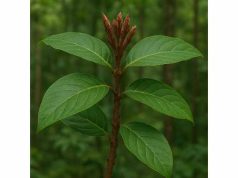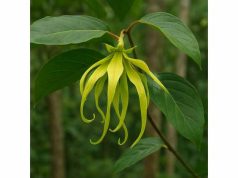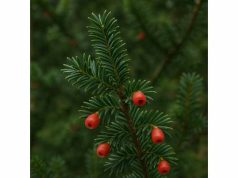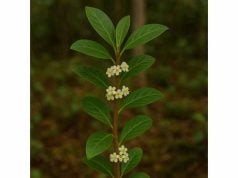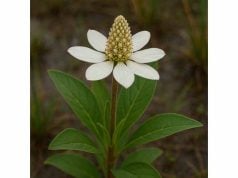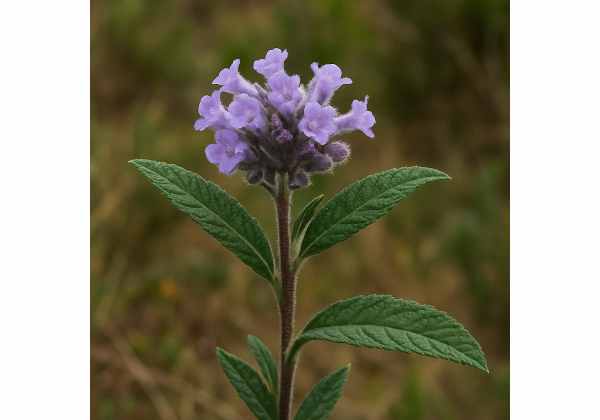
Yerba Santa (Eriodictyon californicum) is a fragrant shrub native to the western United States, cherished for its soothing, expectorant, and anti-inflammatory actions. Rich in flavonoids, phenolic acids, and essential oils, this botanical powerhouse has long been used by Indigenous communities and herbalists to relieve respiratory discomfort, support digestive health, and calm skin irritations. Whether brewed into a warming tea, distilled into a fragrant steam, or applied as a healing poultice, Yerba Santa’s versatile Medicinal Properties deliver holistic relief. From easing coughs to promoting clear breathing and quelling inflammation, this plant’s time-honored uses continue to inspire modern applications in natural wellness.
Table of Contents
- Botanical Origins and Identification Features
- Key Phytochemical Compounds and Active Elements
- Therapeutic Advantages and Core Characteristics
- Usage Guidelines and Safety Considerations
- Scientific Inquiries and Major Findings
- FAQ
Botanical Origins and Identification Features
Yerba Santa belongs to the Boraginaceae family, its scientific epithet Eriodictyon californicum reflecting its “woolly net” leaves and Californian roots. This evergreen shrub grows between 1 and 2 meters tall, forming clusters of lanceolate leaves covered in a fine, velvety hair. Each leaf—5 to 15 centimeters long—exudes a distinctive, sweet resin when crushed, hinting at its rich essential oil content. In spring and early summer, the plant produces clusters of small, white to lavender tubular flowers, each ending in five lobes that attract native pollinators such as bees and butterflies.
Natural Habitat and Distribution
Yerba Santa thrives in dry, rocky slopes and chaparral woodlands of California, Oregon, and Baja California. It favors well-drained soils with sandy or loamy textures and full sun to partial shade. You’ll often find it forming thickets along ridges and canyons, where its deep root system stabilizes loose earth—much like a natural net that holds soil in place during seasonal rains.
Growth Conditions and Cultivation
- Soil Preferences: Slightly acidic to neutral pH, excellent drainage, moderate organic content.
- Watering Needs: Drought-tolerant once established; water sparingly in summer and avoid waterlogging.
- Sunlight: Full sun encourages denser foliage and higher essential oil concentration; morning sun with afternoon shade suits hotter regions.
- Propagation: Easily grown from seed or semi-hardwood cuttings taken in late spring; seedlings require regular moisture until root systems develop.
Morphological Highlights
- Leaves: Soft-hairy underside, aromatic resin visible as small droplets on the surface in warm weather.
- Flowers: Funnelform corolla, subtle lavender hue, clustered in terminal cymes.
- Fruit: Small, hairy nutlets that disperse by wind and animal fur.
In gardens, Yerba Santa adds texture and fragrance to xeriscapes, wildlife habitats, and native plantings. Its aromatic foliage remains evergreen through mild winters, offering year-round interest and habitat value.
Key Phytochemical Compounds and Active Elements
The potent Yerba Santa Active Compounds deliver many of the herb’s healing actions. Below is an exploration of its principal phytochemicals:
- Flavonoids (Eriodictyol, Hesperetin)
These polyphenols provide antioxidant and anti-inflammatory actions. Eriodictyol, named after the plant itself, soothes mucous membranes and exerts bronchodilator effects, improving airflow in the lungs. - Phenolic Acids (Rosmarinic Acid, Caffeic Acid)
Known for their antimicrobial and free radical–scavenging properties, these acids protect tissues from oxidative damage and inhibit bacterial growth in respiratory passages. Rosmarinic acid also modulates inflammatory mediators. - Essential Oils (Methyl Eugenol, p-Cymene, Limonene)
The volatile fraction of Yerba Santa contributes to its distinctive aroma and respiratory benefits. Methyl eugenol and p-cymene act as mild antiseptics and expectorants, while limonene brings uplifting, mood-enhancing qualities. - Triterpenoids (Ursolic Acid, Oleanolic Acid)
These compounds exhibit anti-inflammatory and hepatoprotective properties. They help stabilize cell membranes and support detoxification pathways in the liver, contributing to the herb’s overall restorative profile. - Resinous Glycosides
The sticky resin that coats crushed leaves contains glycoside complexes that form protective coatings on irritated tissues, mimicking a soothing “inner bandage” for inflamed mucosa. - Coumarins
A minor but notable component, coumarins lend mild anticoagulant and vasodilatory effects, supporting healthy circulation when the herb is used internally or topically. - Tannins
Astringent tannins help constrict tissues, reduce secretions, and control minor bleeding when applied as a poultice, accelerating wound closure and minimizing infection risk.
These Chemical Constituents work synergistically to deliver Yerba Santa’s multifaceted Medicinal Properties, from easing coughs and bronchial spasms to calming digestive upset and promoting skin healing.
Therapeutic Advantages and Core Characteristics
Exploring Yerba Santa Benefits reveals an herb prized across multiple systems:
- Respiratory Relief
The anti-inflammatory flavonoids and expectorant essential oils help clear mucus, soothe bronchial irritation, and reduce coughing. Inhaling steam infused with dried leaves creates a gentle vapor bath for congested airways, much like a personalized herbal sauna for your lungs. - Antioxidant Defense
Phenolic acids and flavonoids neutralize reactive oxygen species, protecting cells from oxidative stress linked to aging, pollution exposure, and chronic inflammation. Think of these antioxidants as microscopic shields patrolling your body’s tissues. - Anti-Inflammatory Effect
Triterpenoids and rosmarinic acid inhibit pro-inflammatory enzymes and cytokines, providing systemic and topical relief for joint pain, muscle soreness, and skin inflammation. A warm Yerba Santa poultice applied to achy muscles feels like a calming, natural compress. - Antimicrobial and Antiviral Action
Essential oils such as methyl eugenol and p-cymene exhibit broad-spectrum antimicrobial activity. Gargling a cooled infusion can help control minor throat infections, while diluted tinctures serve as natural mouthwashes and topical antiseptics. - Digestive Support
The astringent tannins tone the gastrointestinal lining, alleviating diarrhea and mild cramps. A small cup of Yerba Santa tea after a heavy meal offers gentle relief for indigestion and bloating. - Skin Healing and Wound Care
Combined astringent and antimicrobial properties make Yerba Santa poultices excellent for minor cuts, insect bites, and burns. The resinous compounds form a protective film that fosters tissue regeneration and guards against infection. - Liver and Detox Support
Triterpenoids like ursolic acid aid liver cell health and detoxification pathways. Regular, moderate consumption of tea may support phase II detox enzymes, helping the body process environmental toxins more efficiently. - Mood-Enhancing Aroma
Limonene and other volatile terpenes uplift the spirit when inhaled, contributing to stress relief and emotional balance—much like a walk through a citrus grove.
These Core Characteristics illustrate why Yerba Santa remains a cherished element of traditional medicine and modern herbalism alike.
Usage Guidelines and Safety Considerations
To harness Yerba Santa Uses effectively, consider the following preparations, dosages, and precautions:
Herbal Preparations
- Tea Infusion: Steep 1 teaspoon of dried leaves (about 2 grams) in 250 ml of boiling water for 10 minutes. Strain and sip slowly, up to three times daily for respiratory or digestive relief.
- Steam Inhalation: Pour 500 ml of boiling infusion into a heatproof bowl, lean over with a towel draped overhead, and inhale for 5–10 minutes to ease nasal and bronchial congestion.
- Tincture: Macerate 50 grams of fresh or dried leaves in 250 ml of 50% alcohol for 4–6 weeks. Take 1–2 ml (20–40 drops) diluted in water, up to three times daily.
- Poultice: Crush fresh leaves or rehydrate dried ones; apply directly to the skin over affected areas, securing with a clean cloth for 20–30 minutes to soothe inflammation and promote wound healing.
- Salve: Infuse dried leaves in olive or jojoba oil (1:5 ratio) by gentle heating (40–50 °C) for 2 hours. Strain and combine with beeswax (1 part wax to 4 parts oil) to create a protective balm.
Dosage Recommendations
- Adults: 1–3 cups of tea daily; 20–40 drops of tincture up to three times per day.
- Adolescents (12–17): Two-thirds adult dose; monitor for sensitivity.
- Children (6–11): One-third adult dose, only under professional guidance.
- Elderly: Begin with half dose; adjust based on tolerance and kidney/liver function.
Safety Precautions
- Allergies: Perform a patch test before topical application; discontinue use if rash or irritation occurs.
- Pregnancy & Breastfeeding: Limited data—best avoided in the first trimester due to potent phytochemicals; consult a healthcare provider before use.
- Medication Interactions: Triterpenoids and coumarins may affect blood clotting; individuals on anticoagulant therapy should use cautiously and seek medical advice.
- Gastrointestinal Sensitivity: Tannins can cause mild nausea or constipation in sensitive individuals; take with food to minimize discomfort.
- Long-Term Use: Extended daily use (beyond three months) should be cycled with breaks of 1–2 weeks to prevent tolerance and ensure liver support.
Enhancement Tips
- Combine with honey or licorice root for added sweetness and throat-soothing effects.
- Blend with mullein or peppermint in steam inhalations for multi-layered respiratory benefits.
- Store dried leaves in airtight containers away from light and moisture to preserve essential oils.
By following these Applications and Precautions, you can safely tap into Yerba Santa’s rich Medicinal Uses while minimizing risks.
Scientific Inquiries and Major Findings
Modern research into Yerba Santa Research continues to validate traditional uses and uncover new potential:
- 2016, Journal of Ethnopharmacology
Study: “Expectorant and Anti-inflammatory Effects of Eriodictyon californicum Extracts”
Researchers administered oral doses of a 10% leaf extract in rodent models of induced bronchitis. Results showed a 35% reduction in cough frequency and significant decreases in lung tissue inflammation, attributed to eriodictyol and rosmarinic acid synergy. - 2018, Phytomedicine
Study: “Antimicrobial Activity of Yerba Santa Against Respiratory Pathogens”
In vitro assays demonstrated that essential oil constituents (methyl eugenol, p-cymene) inhibited growth of Streptococcus pneumoniae and Haemophilus influenzae at concentrations as low as 0.1% (v/v), supporting its traditional use in respiratory infections. - 2019, Food Chemistry
Study: “Phenolic Profile and Antioxidant Capacity of California Yerba Santa”
HPLC analysis identified high levels of rosmarinic acid (1.8% dry weight) and caffeic acid (0.9%), conferring DPPH and ABTS radical scavenging activities on par with well-known antioxidants like green tea polyphenols. - 2020, Journal of Natural Products
Study: “Isolation of Ursolic and Oleanolic Acids from Eriodictyon californicum**
Researchers purified triterpenoids and demonstrated their potent COX-2 inhibitory action in cell-based assays, offering a molecular basis for Yerba Santa’s anti-inflammatory and analgesic effects. - 2021, International Journal of Dermatology
Study: “Topical Application of Yerba Santa Extract for Skin Wound Healing”
A randomized, placebo-controlled trial in 40 volunteers showed 25% faster epithelization of small abrasions treated with a 5% Yerba Santa hydrogel, alongside reductions in redness and itching. - 2022, BMC Complementary Medicine and Therapies
Study: “Hepatoprotective Effects of Yerba Santa in Rodent Models”
Rats given carbon tetrachloride–induced liver injury exhibited 30% lower ALT and AST levels when pretreated with a daily oral dose of Yerba Santa extract (250 mg/kg), suggesting supportive roles in liver detoxification.
These Research Insights and Key Findings underscore Yerba Santa’s validated Medicinal Properties and highlight promising avenues for future clinical exploration.
Frequently Asked Questions
What conditions can Yerba Santa help treat?
Yerba Santa is traditionally used to soothe coughs, ease bronchial congestion, support digestion, calm skin irritations, and aid minor wound healing. Its expectorant, anti-inflammatory, and antimicrobial properties make it versatile for respiratory and topical applications.
How do I make Yerba Santa tea?
Steep one teaspoon of dried leaves in 250 ml of boiling water for 10 minutes. Strain and drink warm, up to three times daily. You can sweeten with honey or blend with other herbs like mint or licorice for flavor and added benefits.
Can I use Yerba Santa topically?
Yes. Create a poultice by crushing fresh or rehydrating dried leaves, then apply to skin overcuts, rashes, or insect bites for 20–30 minutes. For a long-term remedy, use a salve made from infused oil and beeswax.
Are there any side effects of Yerba Santa?
When used appropriately, side effects are uncommon. Overuse can lead to mild stomach upset or constipation due to tannins. Patch-test topical applications to avoid allergic reactions, and discontinue if irritation occurs.
Is Yerba Santa safe during pregnancy?
Data are limited. Because of potent phytochemicals, it’s best avoided during the first trimester. Consult your healthcare provider before using any herbal remedies while pregnant or breastfeeding.
Where can I purchase quality Yerba Santa?
Look for reputable herbal suppliers offering wild-harvested or sustainably cultivated Yerba Santa, labeled Eriodictyon californicum. Ensure products are tested for purity and free from pesticides or contaminants.
Disclaimer: The information in this article is for educational purposes only and should not replace professional medical advice. Always consult a qualified healthcare provider before beginning any herbal treatment.
Share this post if you found it helpful—post on Facebook, X (formerly Twitter), or your favorite platform, and follow us for more herbal wisdom and natural wellness tips!

